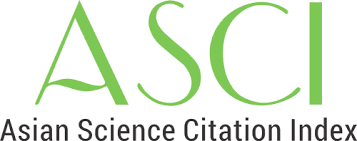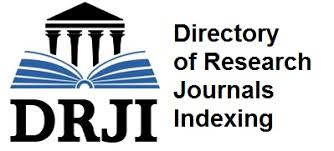Effect of Ergophobia on the Performance of Pakistani Pink-Collar Workers
DOI:
https://doi.org/10.63516/Keywords:
ergophobia, anxiety, fear, work-life balance, performance, work-place fearAbstract
Abstract
Introduction
The objective was to find out how Pakistani pink-collar workers' performance is affected by ergophobia, with a particular emphasis on the mediating function of work-life balance (WLB). This study investigated how anxiety and dread at work affect women in service-oriented professions' personal balance and professional effectiveness.
Methodology
Purposive sampling was used to gather data from 384 female employees in Pakistan's tertiary industries using a cross-sectional approach. Smart PLS was used to analyze the data, and structural equation modeling was used to test hypotheses and evaluate validity and reliability.
Results
The results showed that ergophobia has a substantial and detrimental impact on WLB and performance. Furthermore, it was shown that WLB improved performance and acted as a mediator in the association between ergophobia and performance. This implies that anxiety at work disrupts the balance between personal and professional life, which in turn impairs job outcomes.
Conclusion
According to the study's findings, reducing workplace anxiety is essential to raising pink-collar workers' job performance and general well-being.
Implications
The study emphasizes the need for mental health programs and supporting organizational procedures that foster psychological safety, adaptability, and equilibrium in Pakistan's changing service workforce.
References
1. Alagarsamy, S., Mehrolia, S., & Mathew, J. (2024). Fear of COVID‐19, workplace phobia, workplace deviance and perceived organizational support: A moderated mediation model. Stress and Health, 40(1), e3289.
2. APA. (2018). APA Dictionary of Psychology - Pink-Collar Worker. American Psychological Association. https://dictionary.apa.org/pink-collar-worker
3. Carloni, K. (2023, March 15). Ergophobia (Fear of Working): Signs, Symptoms, & Treatments [Review of Ergophobia (Fear of Working): Signs, Symptoms, & Treatments]. Choosing Therapy. https://www.choosingtherapy.com/ergophobia/
4. Catapano, P., Cipolla, S., Sampogna, G., Perris, F., Luciano, M., Catapano, F., & Fiorillo, A. (2023). Organizational and individual interventions for managing work-related stress in healthcare professionals: A systematic review. Medicina, 59(10), 1866.
5. De Jongh, A., Ten Broeke, E., & Renssen, M. R. (2001). Treatment of specific phobias with Eye Movement Desensitization and Reprocessing (EMDR): Protocol, empirical status, and conceptual issues. J PRACT PSYCHOL, 7.
6. Fazal, S., Masood, S., Nazir, F., & Majoka, M. I. (2022). Individual and organizational strategies for promoting work–life balance for sustainable workforce: A systematic literature review from Pakistan. Sustainability, 14(18), 11552.
7. Haines, J., Williams, C. L., & Carson, J. M. (2002). Workplace phobia: psychological and psychophysiological mechanisms. International Journal of Stress Management, 9, 129-145.
8. IndexMundi. (2021). Pakistan — Labor force participation rate, female (% of female population ages 15+) (modeled ILO estimate). IndexMundi. Retrieved from: https://www.indexmundi.com/facts/pakistan/indicator/SL.TLF.CACT.FE.ZS
9. Isa, M., & Indrayati, N. (2023). The role of work–life balance as mediation of the effect of work–family conflict on employee performance. SA Journal of Human Resource Management, 21, 1910.
10. Jamilah, J., Kambara, R., & Mulyani, A. S. (2024). The Effect of Work Life Balance and Job Training on Employee Performance: Job Satisfaction as Mediation. Asean International Journal of Business, 3(2), 182-192.
11. Khalil, S., & Warner, A. (2025). Invisible labor, visible barriers: The socioeconomic realities of women's work in Pakistan (arXiv:2508.16664) [Preprint]. arXiv. https://doi.org/10.48550/arXiv.2508.16664
12. Mahmood, A., & Khan, M. M. (2024). The effect of work-family conflicts on employee well-being: the mediating role of work-life balance and the moderating role of psychological resources. Pakistan Social Sciences Review, 8(4), 592-609.
13. Malik, S., Ullah, I., Irfan, M., Ahorsu, D. K., Lin, C. Y., Pakpour, A. H., ... & Minhas, R. (2021). Fear of COVID-19 and workplace phobia among Pakistani doctors: A survey study. BMC Public Health, 21, 1-9.
14. Muschalla, B., & Linden, M. (2014). Workplace phobia, workplace problems, and work ability among primary care patients with chronic mental disorders. The Journal of the American Board of Family Medicine, 27(4), 486-494.
15. Muschalla, B., & Linden, M. (2014). Workplace phobia, workplace problems, and work ability among primary care patients with chronic mental disorders. The Journal of the American Board of Family Medicine, 27(4), 486-494. DOI: https://doi.org/10.3122/jabfm.2014.04.130308
16. Njoki, W. (2021). GENDER DISCRIMINATION IN THE WORKPLACE. Journal of Gender Related Studies, 2(2), 9-17.
17. Pustovit, S., Miao, C., & Qian, S. (2024). Fear and work performance: A meta-analysis and future research directions. Human Resource Management Review, 34(3), 101018. https://doi.org/10.1016/j.hrmr.2024.101018
18. Rafique, M. A., Hou, Y., Chudhery, M. A. Z., Waheed, M., Zia, T., & Chan, F. (2022). Investigating the impact of pandemic job stress and transformational leadership on innovative work behavior: The mediating and moderating role of knowledge sharing. Journal of Innovation & Knowledge, 7(3), 100214.
19. Sarwar, A., Abdullah, M. I., Imran, M. K., & Fatima, T. (2023). When fear about health hurts performance: COVID-19 and its impact on employee’s work. Review of Managerial Science, 17(2), 513-537.
20. Shirmohammadi, M., Chan Au, W., & Beigi, M. (2022). Antecedents and outcomes of work-life balance while working from home: A review of the research conducted during the COVID-19 pandemic. Human Resource Development Review, 21(4), 473-516.
21. Smith, M. E. (2009). Work phobia and sickness leave certificates: Guest editorial. African Journal of Psychiatry, 12(4), 249-253.
22. Thaufayl, M. H. C., Ardyanto, M. F., Julio, F. L., Nugroho, A. A., & Pratama, H. M. (2024). The Effect of Flexible Working Arrangement and Work Life Balance on Employee Performance.
23. Vignoli, M., Muschalla, B., & Mariani, M. G. (2017). Workplace phobic anxiety as a mental health phenomenon in the job demands‐resources model. BioMed research international, 2017(1), 3285092.
24. Wang, M. L., Narcisse, M. R., Togher, K., & McElfish, P. A. (2024). Job flexibility, job security, and mental health among US working adults. JAMA Network Open, 7(3), e243439-e243439. doi:10.1001/jamanetworkopen.2024.3439
25. Zeerak, S., Kamran, A., Khan, M., & Khan, Q. (2018). Impact of Job Stress on Employee Social Life: A Study to Test Work-Life Balance. Journal of Social Sciences and Media Studies, 2(1), 34-42.
Downloads
Published
Issue
Section
License
Copyright (c) 2025 Archives of Management and Social Sciences

This work is licensed under a Creative Commons Attribution 4.0 International License.








